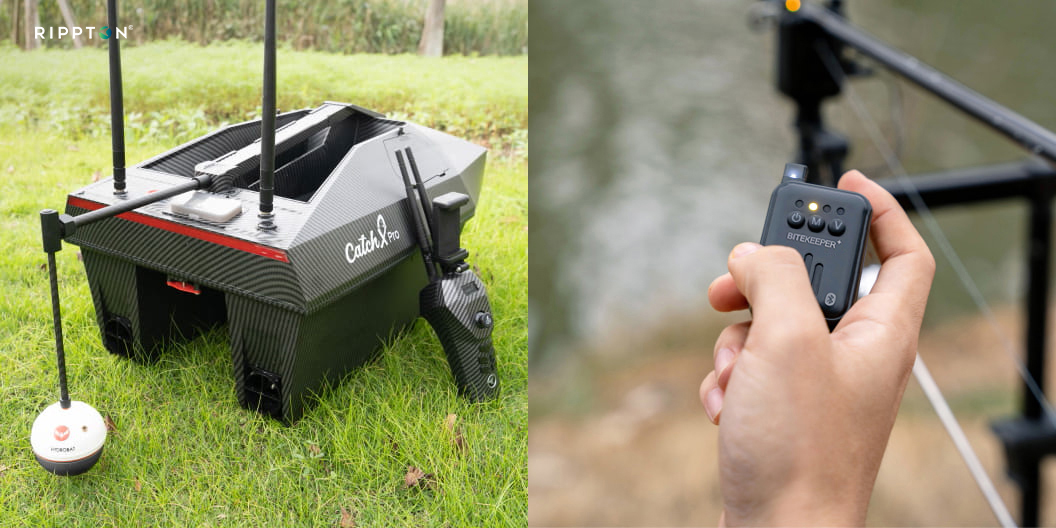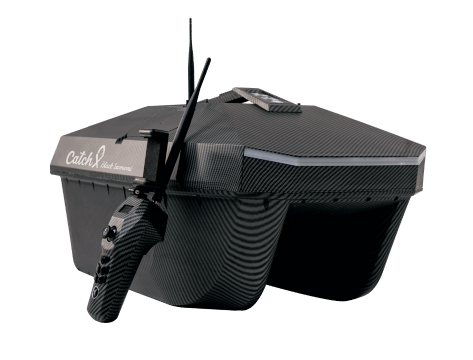Do Carp Have Teeth? Exploring the Hidden World of Fish Teeth
When you think of fish, teeth probably aren't the first thing that comes to mind. However, one question repeatedly floats to the surface among curious anglers and fishing enthusiasts— do carp have teeth?
The answer is both fascinating and unexpected! Carp, like several other fish species, boast specialized dentition that is as functional as it is unique.
Understanding carp teeth goes beyond trivia; it gives anglers insights into carp feeding behaviors and helps refine fishing techniques for better success. So, if you're a seasoned angler or simply interested in the quirks of aquatic life, this deep dive into the world of carp teeth will undoubtedly pique your curiosity.
Teeth in Fish: Variations and Adaptations
Do All Fish Have Teeth?
The short takeaway is that most fish have teeth, but they differ vastly in form, function, and placement based on diet and habitat.
- Toothless species: Not all fish flaunt sharp pearly whites. Seahorses and pipefish are toothless, as they rely on suction feeding to consume tiny shrimp and plankton.
- Carnivores with sharp teeth: Predatory fish, like northern pike and barracuda, have specialized teeth designed to puncture, hold, and tear prey.
- Herbivores with flat grinding surfaces: Plant-eating fish, like carp, have teeth better suited for crushing or grinding vegetation. Their dental adaptations allow them to process tough plant materials effectively.
From sharp incisors to crushing molars, the variety of fish dentition showcases the marvels of evolution.
Do Carp Have Teeth?
The simple answer is yes—carp do have teeth, though not in the way you might expect!
Unlike the sharp, visible teeth seen in some predatory fish, carp's teeth are quite different, carp have pharyngeal teeth , which are located deep within their throats. These teeth are unique grinding mechanisms that help them process diverse food sources.
Specifically, carp teeth are located on the pharyngeal bone in the throat area, hidden far out of plain sight. These teeth are much flatter and closer to molars in humans rather than the sharp teeth of pike or bass species.
What sets carp apart is how their teeth adapt to their omnivorous diet. The teeth crush and grind tough plant material, seeds, and even the hard outer shells of mollusks.
Carp Teeth vs. Predator Teeth
- Carp Teeth: Flat, molar-like structures used for grinding.
- Predator Teeth: Long, sharp, and suited for tearing and cutting prey.
- Unique Placement: Carp teeth being hidden in their throats make for a less intimidating look but are highly functional.
The Role of Pharyngeal Teeth in Carp Feeding
Pharyngeal teeth play a critical role in carp feeding, acting as nature's grinder. Carp are omnivorous, and their diet is incredibly diverse. Some common foods include aquatic vegetation, plant seeds, algae, insect larvae, mollusks, and small crustaceans.
Pharyngeal teeth provide carp with the versatility to chew through tough, fibrous materials or crush the hard shells of prey. These grinding tools allow carp to thrive in a variety of aquatic environments and adapt to available food sources.
The evolutionary advantage of these teeth is clear—they allow carp, like the common and grass carp, to exploit a wide range of food sources, giving them a survival boost.
Koi Carp and Their Teeth
Do Koi Carp Have Teeth ? Yes, koi carp also have pharyngeal teeth! While primarily ornamental, koi carp share dental similarities with their wild counterparts. Their diet, which consists largely of plant material, influences the structure of their teeth.
Koi pharyngeal teeth are particularly suited for grinding algae, seeds, and other softer plant-based foods. Though koi are less likely to chew through hard matter like their wild cousins, they still rely on these teeth for their day-to-day feeding.
Grass Carp Teeth – A Closer Look
Grass carp, known for their voracious appetite for aquatic vegetation, has some of the most specialized pharyngeal teeth. These teeth are adapted for tearing and grinding dense plant material, making grass carp exceptionally effective biological weed managers in ecosystems.
Their teeth are stronger and more robust compared to other carp species, perfectly designed for their herbivorous lifestyle. Grass carp are often introduced into overgrown waterways to control invasive vegetation, showcasing the utility of their unique grinding tools.
Carp and Human Interaction
Do Carp Bite Humans?
Here's a common myth that we need to debunk—do carp bite humans?
No, carp cannot bite humans. Carp teeth, located far back in their throats, are nearly impossible to use for biting humans. Even if a carp wanted to latch on, their non-intimidating lips and specialized jaws ensure they pose no threat.
While carp don't “bite” like predatory species, anglers may feel a gentle nibble when carp investigate bait. Rest assured, pharyngeal grinding is harmless to humans!
How Many Teeth Do Fish Have?
Fish dentition varies dramatically across species, from toothless seahorses to predatory pike boasting rows of razor-sharp teeth.
- Carp Teeth Count: Carp have three rows of teeth in their throats, with each row consisting of a few molar-like structures.
- Predator Teeth Count: Predatory fish can have dozens, if not hundreds, of sharp teeth depending on size and age.
- Jawless Fish: Some species like lampreys use suction rather than teeth for feeding.
Fun Trivia
- Most fish replace their teeth multiple times throughout their lives.
- Carp teeth, though hidden, are one of nature's most effective grinding adaptations.
The Purpose of Fish Teeth
Why Do Fish Have Teeth?
Fish teeth serve specific evolutionary purposes depending on their diet and feeding behavior.
- Carnivores: Teeth help catch and tear prey.
- Herbivores: Teeth help grind tough vegetation and seeds.
- Other Functions: Some toothless varieties use suction mechanisms instead of teeth for efficient feeding.
Carp teeth stand out as remarkable adaptations, allowing omnivorous species to enjoy dietary versatility.
Fishing Tips – Leveraging Knowledge About Carp Teeth
Knowing carp's specialized feeding mechanisms gives anglers a huge edge. Here's how to use this knowledge to your advantage during your next carp fishing trip.
Understanding Carp Feeding Behavior
Carp are opportunistic feeders who prefer soft plant matter, seeds, and small invertebrates. Adjust your bait selection accordingly! Seeds, vegetables, and pellets make excellent bait choices. Their feeding behavior is shaped by their ability to exploit a wide range of natural and artificial food sources.
Diet Composition
Carp primarily consumes:
- Soft plant matter and seeds : Aquatic vegetation and seeds are significant components of their diet, especially for larger individuals.
- Small invertebrates : Zooplankton, insect larvae, mollusks, and worms are key protein sources, particularly for juvenile carp.
- Detritus : Decomposing organic material from lake or riverbeds is a staple, especially during colder months when other food sources are scarce.
- Artificial feeds : Carp readily accepts formulated feeds like pellets, which are often tailored to meet their nutritional requirements
Feeding Habits
- Omnivorous Nature : Carp exhibit flexibility in their diet, switching between plant-based and animal-based foods depending on availability. For instance, detritus and insects dominate during dry months, while phytoplankton and macrophytes are more prevalent during wet months.
- Bottom Feeding Behavior : As carp grow larger (over 50g), they increasingly feed from the soft bottom of water bodies. This behavior allows them to access detritus, small organisms, and plant roots.
- Seasonal Variations :
- During warm months (20–25°C), carps actively feed to meet their energy demands for growth and reproduction.
- In colder temperatures (below 15°C), feeding slows significantly, and it stops almost entirely below 8°C as carp enters a hibernation-like state.
Bait Selection for Anglers
To maximize success in attracting carp:
- Use bait that mimics their natural diet, such as seeds (eg, maize), vegetables (eg, peas), or protein-rich pellets.
- Incorporate attractants like amino acids or natural extracts (eg, green-lipped mussel) to stimulate their sensory system.
- Adjust bait strategies seasonally; for example, high-protein baits in spring and summer help replenish energy after winter.
Scientific Insights
Studies have shown that carp's feeding behavior is influenced by:
- Environmental Factors : Water temperature significantly feeding impacts intensity. Carp thrive in eutrophic waters rich in organic nutrients and exhibit higher metabolic rates at warmer temperatures.
- Digestive Adaptations : Lacking a stomach, carp rely on long intestines to digest carbohydrates efficiently. This makes them well-suited to diets with 30–40% carbohydrates alongside proteins and lipids.
- Sensory Abilities : Carp possess advanced taste receptors in their mouth and barbels, allowing them to detect amino acids and other nutrients in water. This ability helps them identify high-value food sources even in murky environments
Tools to Enhance Your Carp Fishing Experience
Maximize fishing success with advanced tools designed to target carp feeding behavior effectively.

CatchX Pro Bait Boat: Equipped with GPS and autopilot, the CatchX Pro Bait Boat ensures bait is delivered to exact feeding zones. This enables anglers to target carp in hard-to-reach areas with pinpoint accuracy.
By delivering bait directly to feeding zones, it increases the likelihood of attracting fish while reducing wasted bait. The quiet operation ensures that fish are not spooked, making it ideal for stealthy fishing in pressured waters.
Hydrobat Sonar Fish Finder: The Rippton Hydrobat Sonar helps anglers locate carp efficiently by identifying their exact positions and preferred underwater structures.
This eliminates guesswork, allowing anglers to focus on productive areas. Its depth mapping feature is particularly useful for understanding where carp are likely to feed, especially in unfamiliar waters.
BITEKEEPER Pro Alarm: BITEKEEPER Pro Alarm Set ensures that no bite goes unnoticed, even during periods of low activity or at night.
Its smartphone integration allows anglers to monitor their lines without needing to stay physically close, offering convenience and flexibility. This tool is particularly beneficial for long fishing sessions or when targeting cautious carp that nibble gently before committing to the bait.
Comparing Carp Dentition Across Species
|
Species |
Type of Dentition |
Feeding Adaptation |
|
Common Carp |
Pharyngeal Teeth |
Grinding plants and crushing mollusk shells |
|
Grass Carp |
Pharyngeal Teeth |
Tearing and grinding aquatic vegetation |
|
Bighead Carp |
Reduced Dentition |
Specialized for filter-feeding plankton |
|
Black Carp |
Strong Pharyngeal Teeth |
Crushing hard mollusk shells |
Environmental Impact – Why Understanding Carp Feeding Matters
Role in Ecosystem Balance
By understanding carp feeding habits, anglers and environmental enthusiasts can better grasp the role these fish play in their ecosystems. Carp can influence aquatic vegetation levels and invertebrate populations, reshaping underwater food chains.
Sustainable Fishing Practices
Use tools like Rippton's GPS-enabled bait boats to minimize environmental disruption during carp fishing. Ethical angling ensures these fascinating fish continue to thrive in their habitats.
Master Carp Fishing With Smart Tools
Carp teeth may be hidden, but their importance is anything but small! From grinding tough plants to sustaining ecosystems, their pharyngeal devices are true evolutionary marvels.
Next time you head out on the water, leverage this knowledge to elevate your fishing game. With cutting-edge gear like Rippton's Fishing Gears, you'll be better equipped to target feeding zones, minimize waste, and make every fishing trip a win.
Time to reel in your big catch—explore our full range of smart fishing tools for carp fishing success!


























